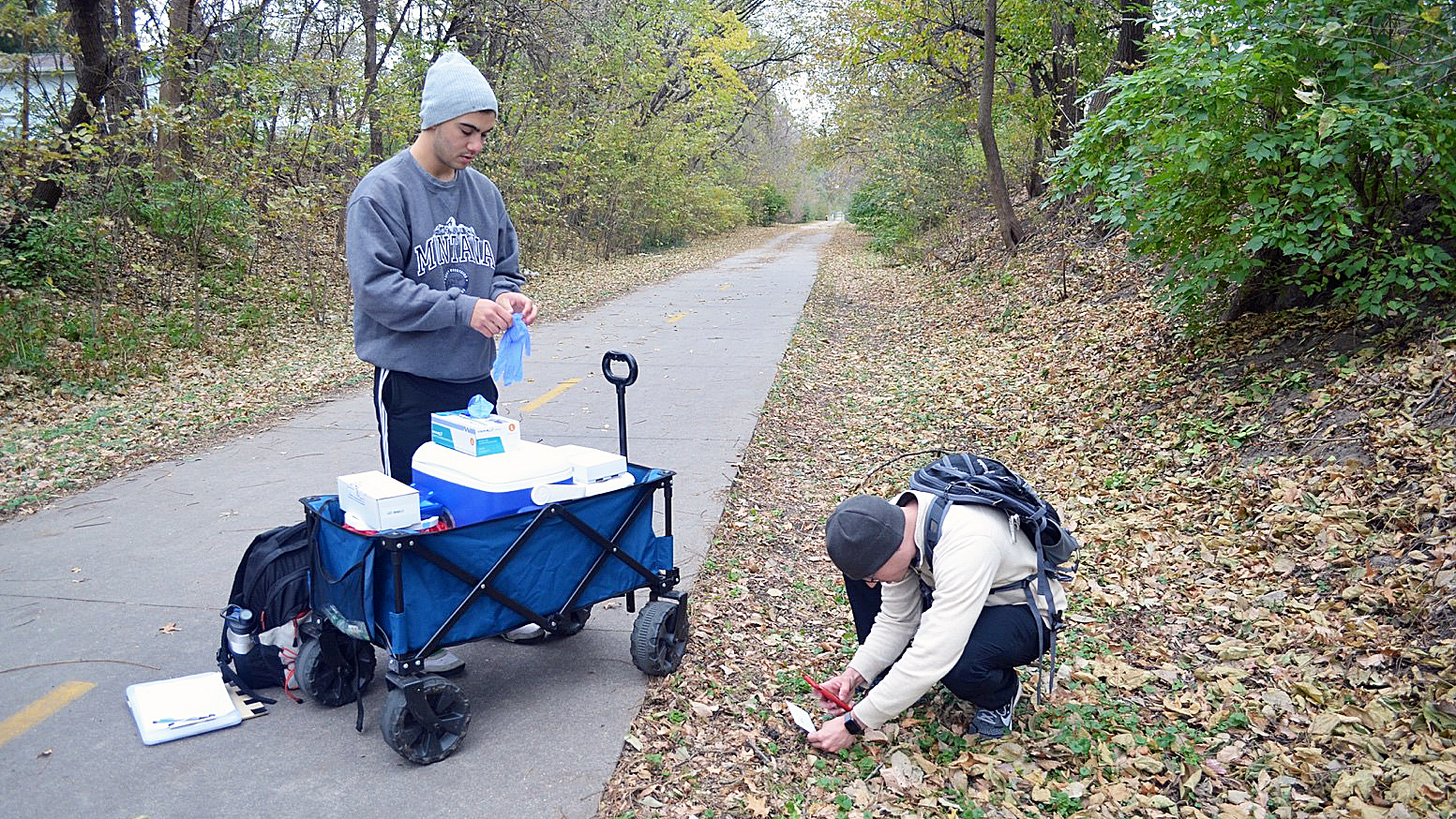
Spotted: red foxes, slinking through neighborhoods, jumping fences, and making themselves right at home in Lincoln. But how do these small neighbors affect cities, and why should we care?
Mike True set out to find some answers. The School of Natural Resources fisheries and wildlife major was first drawn to canid and carnivore research after taking vertebrate zoology with Dr. John Benson. When an opportunity rose to study the enigmatic scavengers with Dr. Liz VanWormer and master’s student Kyle Dougherty as a Cabela’s Apprentice, he quickly seized it.
His goal as a researcher was to estimate the distribution and abundance of foxes within and immediately outside of Lincoln. Although foxes can live in cities, they often move back and forth between urban and rural spaces. Understanding where and how many of them there are can provide valuable information about potential diseases that could affect human or domestic animal health.
Research such as this is growing in importance both globally and locally, especially after Nebraska was identified by the Centers for Disease Control and Prevention as a high-risk area for zoonotic pathogens, or diseases that can be shared between animals and people. Foxes historically have been studied as ones that can provide an advance warning of danger or risks to humans due to their diverse diet and tendency for predators to pick up their diseases.
Through his research, True walked the Mopac, Jamaica North, and Rock Island trails looking for fox scat. He then used the data to estimate the number of red foxes within Lincoln. He now is determining whether parasites are within those scats, and the final step will be linking those findings with the number of foxes.
He was surprised to learn how foxes used the landscape and how they acclimated well to the changing landscape to survive. He also gained a new perspective on human-wildlife interactions because of his research.
“Once I realized that wildlife and human ecosystems should not and cannot be separated, it opened up a whole new field of thought that I hadn’t quite tapped into,” he said. “Plus, getting experience with live trapping, GPS collaring, data collection, field work, and working with GPS, GIS, and R software is incredibly important for my future studies.”
In the immediate future, True will continue working with Dougherty to learn more about the local fox population. The two aim to capture adults and put radio collars on them to gain more insight into their distribution and potential diseases. (For more information on the project, visit the iNaturalist website.)
After he graduates, True plans to go on to graduate school and hopes to focus his studies on changes occurring within ecological communities and populations of large mammals that are driven by anthropogenic activities.
The Cabela’s Apprenticeship program
The apprenticeship program began about five years ago with a donation by Cabela's that now funds undergraduate research projects. The program is a partnership with Cabela's, Nebraska Game and Parks Commission, and SNR at the University of Nebraska-Lincoln, and to date, has funded 18 student-led research projects.
This semester, Inside SNR is featuring several of the 2018-’19 Cabela’s apprentices. To learn more about the program, click here.
— Cat Berrick, Cabela’s Apprentice